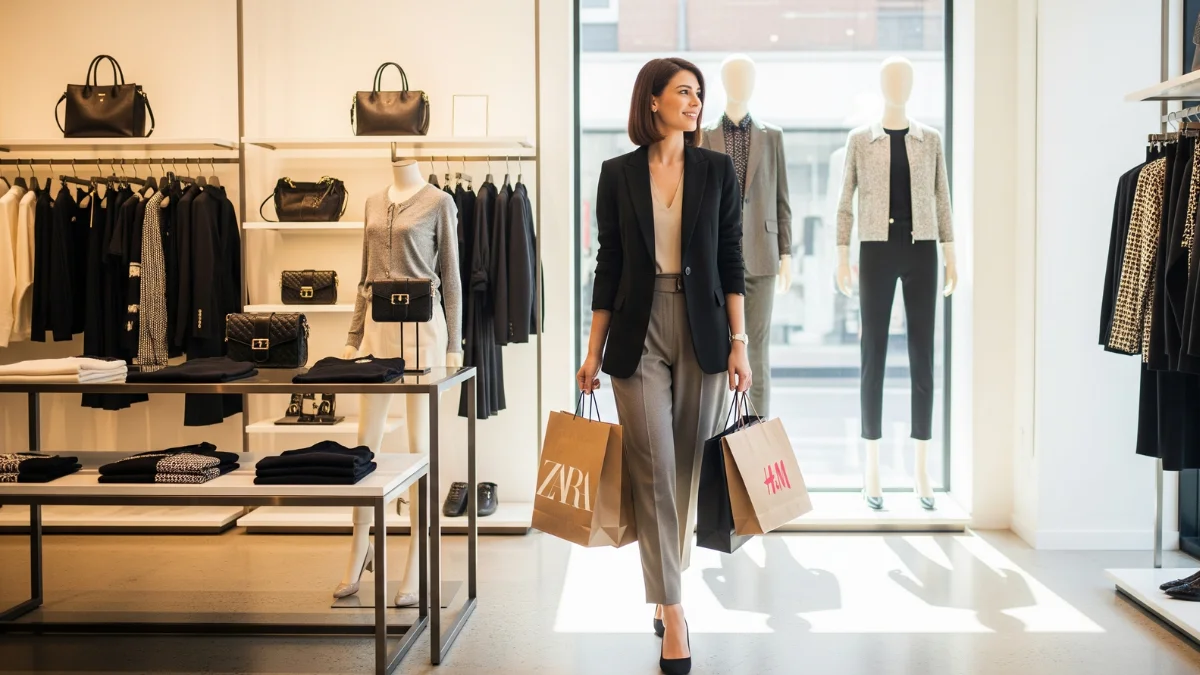Designer fashion often feels unreachable because of intimidating luxury price tags. Fortunately, today’s market offers stylish and affordable designer brands at reasonable costs. These labels balance quality, design, and prestige without extreme expense. They allow shoppers to experience luxury without compromising financial comfort.
Affordable designer brands provide high-quality fashion with recognizable prestige at lower costs. They usually fall between $200 and $1,200, making them an accessible entry into designer fashion. Many also retain value through resale or long-term use. This makes them practical investments, not just luxury purchases.
What to Look for in a Designer Brand (Quality & Value)
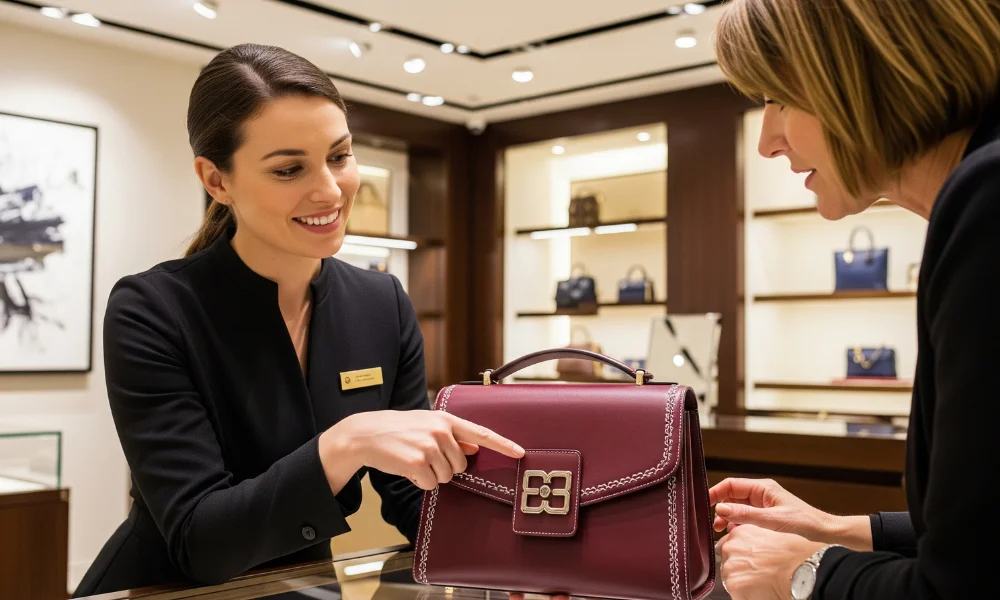
Key Factors to Consider
Affordable designer brands must still deliver excellent craftsmanship and durable quality. Fabrics like leather, silk, and cotton feel luxurious and last longer. Stitching, seams, and hardware signal strong design and professional construction. Paying attention to these details ensures your purchase offers long-lasting wear.
Timelessness matters as well. Choose classic cuts, neutral shades, and versatile items. These guarantee multiple outfit uses, making your investment more worthwhile. A timeless blazer, handbag, or shoe can last across several seasons. They stay relevant even when fast trends quickly disappear.
Beyond Price Tags
Evaluating price-per-wear reveals true value over time. A $400 bag used daily often costs less than cheap replacements. Long-lasting pieces save money and provide greater satisfaction. Understanding this principle enables buyers to make more informed financial choices in the fashion industry.
Ethical practices also define modern affordability. Brands that support fair labor and sustainable fabrics increase their long-term value. Their items combine style with conscious responsibility. This helps consumers support both quality and global fairness.
Breaking Down Price Tiers
Entry-Level, Mid-Range, Aspirational
Affordable designer brands cover multiple price tiers. Entry-level fashion typically ranges between $200 and $500. Mid-range pieces often cost $500–$1,200, depending on fabrics and tailoring. This wide scale ensures accessibility across different budgets and needs.
Aspirational affordable designers range from $1,200 to $2,000. These usually include coats, shoes, or timeless investment bags. Shoppers should define budgets before exploring these categories. Understanding tiers helps prioritize purchases based on lifestyle and wardrobe needs.
Price Tier Table
| Tier | Price Range | Key Features | Example Brands |
|---|---|---|---|
| Entry-Level | $200–$500 | Trendy designs, solid quality, and small accessories | Coach, Kate Spade, Tory Burch |
| Mid-Range | $500–$1,200 | Premium tailoring, modern wardrobe staples | Sandro, Maje, Theory |
| Aspirational | $1,200–$2,000 | Investment pieces, resale potential | Acne Studios, Isabel Marant |
Top Affordable Designer Brands to Know
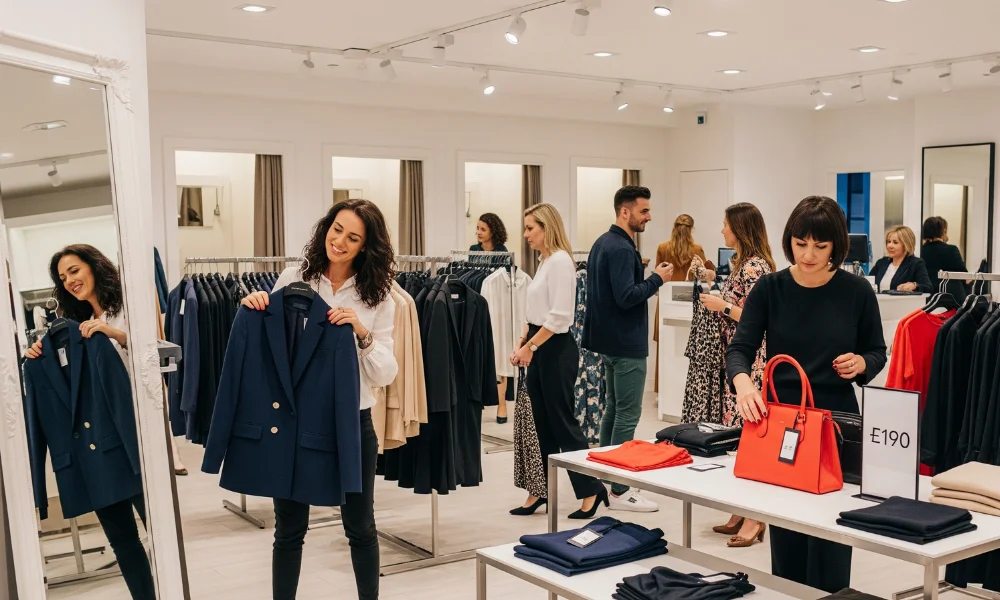
Tier 1: Entry-Level Designer Brands (Under $500)
Kate Spade offers playful handbags and cheerful prints at accessible prices. Most handbags fall under $400, appealing strongly to younger professionals. Their aesthetic balances fun style with recognizable prestige. The brand remains a staple for fashionable and affordable accessories.
Coach is iconic for leather craftsmanship. Its outlet stores reduce prices dramatically. Bags and wallets deliver long-lasting value at affordable levels. Coach continues to modernize styles while keeping its heritage of quality intact.
Tier 2: Mid-Range Designer Brands ($500–$1,200)
Sandro and Maje represent Parisian chic with tailored separates and feminine dresses. They balance contemporary trends with timeless wardrobe essentials. Many professionals favor them for their versatility in workwear and social outfits. Their collections deliver polished elegance at competitive price points.
Theory excels in modern professional attire, such as blazers, trousers, and coats. Reformation combines sustainability with on-trend silhouettes, proving eco-conscious design can feel luxurious. Both brands cater to consumers seeking value and responsible production. Their designs transition easily between work and casual occasions.
Tier 3: Aspirational Designer Brands ($1,200–$2,000)
Isabel Marant embodies French bohemian style. Her boots, sneakers, and jackets remain fashion icons. Investment-worthy designs retain value across multiple seasons. Her collections appeal to shoppers who want effortless Parisian flair.
Jacquemus experiments with playful architecture in clothing and accessories. His mini bags and bold dresses average around $1,500. These capture international attention at lower luxury thresholds. His approach keeps fashion fun while remaining aspirational yet affordable.
Self-Portrait delivers red-carpet gowns under $2,000. Celebrities frequently wear them, proving glamour doesn’t always demand couture prices. Their intricate lace and modern designs provide maximum impact. These designs make affordable eveningwear an achievable luxury.
How to Shop Designer for Less
Smart Shopping Strategies
Outlets and sample sales make designer fashion much more affordable. Discounts usually reach 40–70%, especially during end-of-season clearance. These opportunities allow buyers to score genuine pieces for much less. Outlet malls and sample sales remain popular destinations for smart shoppers.
Online resale platforms also open doors to savings. Sites like The RealReal and Vestiaire Collective offer authenticated designer fashion. Pre-loved purchases extend the lifecycles of items and reduce overall fashion waste. Shopping secondhand often introduces rare pieces no longer available in stores.
Authenticity & Timing
Designer counterfeits are widespread, especially with trendy accessories and bags. Always purchase from reputable retailers or verified resale platforms online. Check details like stitching, hardware, and packaging for signs of quality. Authenticity guarantees long-lasting value and reduces regret.
Seasonal timing also plays a role in affordability. Major sales happen after fashion weeks or holidays. Shopping strategically during these windows ensures better prices on popular items. Learning sales calendars saves significant amounts without sacrificing style.
Styling & Maximizing Your Designer Pieces
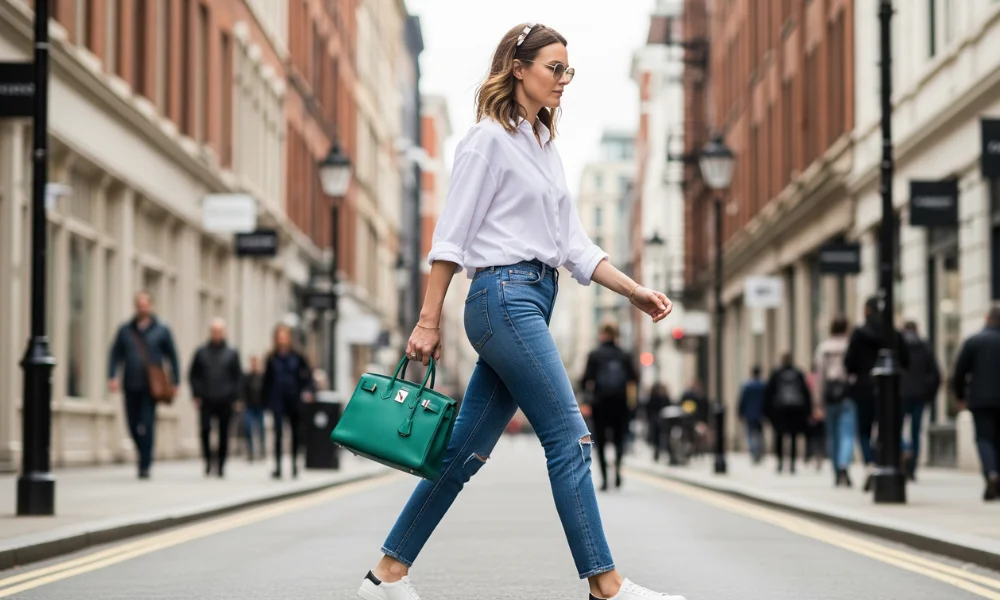
Mix High with Low
Pairing designer pieces with affordable basics creates effortless, balanced outfits. A Coach handbag looks chic with high-street denim and simple tops. Investing in timeless blazers, shoes, or accessories guarantees endless styling versatility. This strategy allows fashionistas to stretch their wardrobes without overbuying.
Designer pieces can instantly elevate a budget wardrobe. One standout item draws attention and communicates sophistication. When styled with everyday clothing, designer items remain practical without appearing excessive. Balanced styling maximizes the visibility of each purchased piece.
Care & Longevity
Caring for designer pieces increases their life and long-term value. Store handbags in dust bags, polish leather, and dry-clean delicate fabrics. Small efforts protect craftsmanship and preserve beauty over time. Proper care prevents costly replacements later.
Rotate items instead of overusing one piece repeatedly. This prevents visible wear on seams, fabrics, or hardware. Balanced usage extends durability, saving money across years of wear. Conscious use also maintains appearance for possible resale.
Ethical & Sustainable Designer Alternatives
Brands Doing It Right
Sustainability and affordability can align in modern designer fashion. Brands like Reformation and Stella McCartney prioritize eco-conscious materials and sustainable production practices. Their pieces deliver fashion-forward design alongside ethical value. Consumers appreciate transparency and environmental awareness.
Everlane sets another strong example with cost transparency. They reveal production breakdowns for every item sold. This practice fosters trust and makes high-quality, affordable products accessible to shoppers. Ethical storytelling strengthens customer loyalty across markets.
Why Sustainability Adds Value
Ethical designer purchases bring personal satisfaction and social responsibility. Supporting eco-friendly practices not only protects workers but also reduces global fashion waste. Many shoppers consider this an investment in both values and style. Buying sustainably feels more rewarding in the long run.
Over time, sustainable items provide stronger value. Quality fabrics resist wear better and last longer. Supporting sustainable brands often means buying fewer but longer-lasting items. This approach reduces clutter while ensuring timeless fashion investment.
Global / Regional Considerations
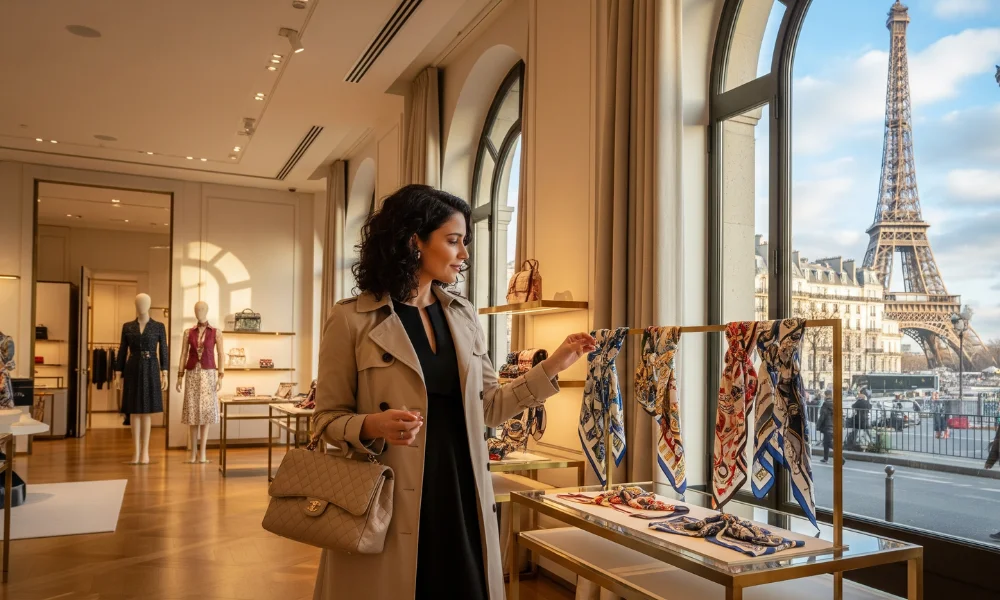
Shopping in Different Markets
Designer fashion prices vary widely across regions. American shoppers benefit from outlets, sales, and department store clearances. Europeans often access lower retail pricing directly in Paris or Milan. Travel shopping often includes tax-free benefits.
Asian markets face higher taxes and import duties. Many shoppers rely on platforms like Farfetch or Net-a-Porter. Online shopping expands access but often adds customs charges. Price variations underscore the importance of making informed location choices.
Regional Affordable Designers
Regional brands offer affordable luxury alternatives. Pakistani labels like Khaadi Luxe or Indian designers like Anita Dongre impress globally. They combine cultural design with accessible pricing and strong craftsmanship. These brands offer a blend of authentic heritage and modern appeal.
Local designers reduce costs associated with shipping and duties. Regional tailoring traditions also enhance quality and uniqueness. Supporting local fashion sustains regional economies and traditions while offering unique style. Shopping local also helps consumers discover underrepresented talent.
Celebrity Influence on Affordable Designer Brands
Red Carpet and Media Exposure
Celebrities often elevate affordable designer brands by showcasing them publicly. A single appearance can create sudden global demand for one label. Stars like Meghan Markle and Zendaya often wear mid-range designers. Their influence changes consumer perception of affordability and style.
Social media amplifies this effect even further. Influencers frequently showcase affordable designer pieces on Instagram or TikTok. Visibility encourages followers to explore more budget-friendly luxury options. This trend reshapes how younger generations shop for fashion.
Collaborations and Limited Editions
Celebrity collaborations with designers often produce limited, affordable collections. These partnerships increase accessibility while boosting brand prestige. H&M and designer collaborations often sell out quickly worldwide. Similar models exist within mid-tier affordable designer brands.
Limited editions create urgency and exclusivity. They appeal to younger buyers who crave uniqueness. Affordable designer brands benefit from cultural buzz and sales growth. Collaborations enhance both exposure and accessibility simultaneously.
Cost vs. Value: The Price-Per-Wear Mindset
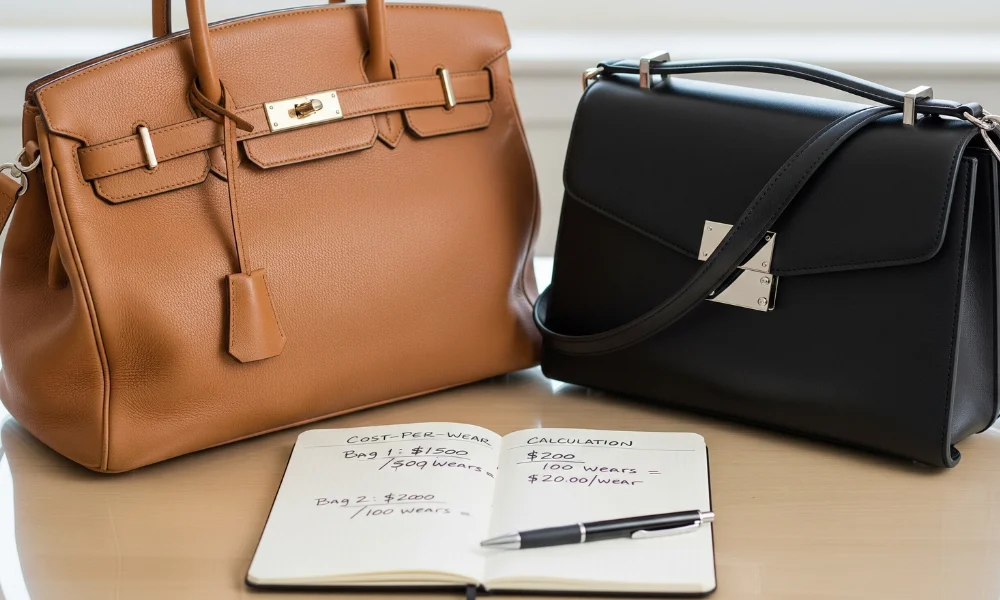
Why It Matters
Cost-per-wear helps reveal the true value behind purchases. Divide the item cost by the estimated uses. Designer coats or shoes often outperform fast fashion through extended wear. Shoppers save significantly by avoiding frequent replacements.
A $1,200 coat worn one hundred times equals twelve dollars per wear. A $70 jacket worn five times equals fourteen dollars per wear. Long-lasting items often prove cheaper in the long run. Viewing purchases this way encourages smarter fashion choices.
Resale Potential
Resale value adds another layer to affordability. Some brands retain popularity and sell well secondhand. Coach, Tory Burch, and Jacquemus consistently attract interest on resale platforms. Resale protects your investment and promotes a circular fashion approach.
Selling pieces offsets original costs. Pre-loved marketplaces reduce the net investment required. Resale strategies also keep wardrobes fresh without overspending. Circular fashion continues growing as shoppers embrace sustainability.
Conclusion
Affordable designer brands show that style and quality can meet any budget. Smart shopping, sustainable choices, and resale opportunities make luxury accessible. Consumers enjoy timeless fashion without compromising their financial comfort.
Prioritize timeless designs, care for items properly, and shop strategically for value. By mixing high and low, you create versatile looks that last. Affordable designer brands prove luxury fashion can be stylish, sustainable, and attainable.
Ready to upgrade your wardrobe? Explore affordable designer brands today and find timeless pieces that fit your lifestyle and budget.

